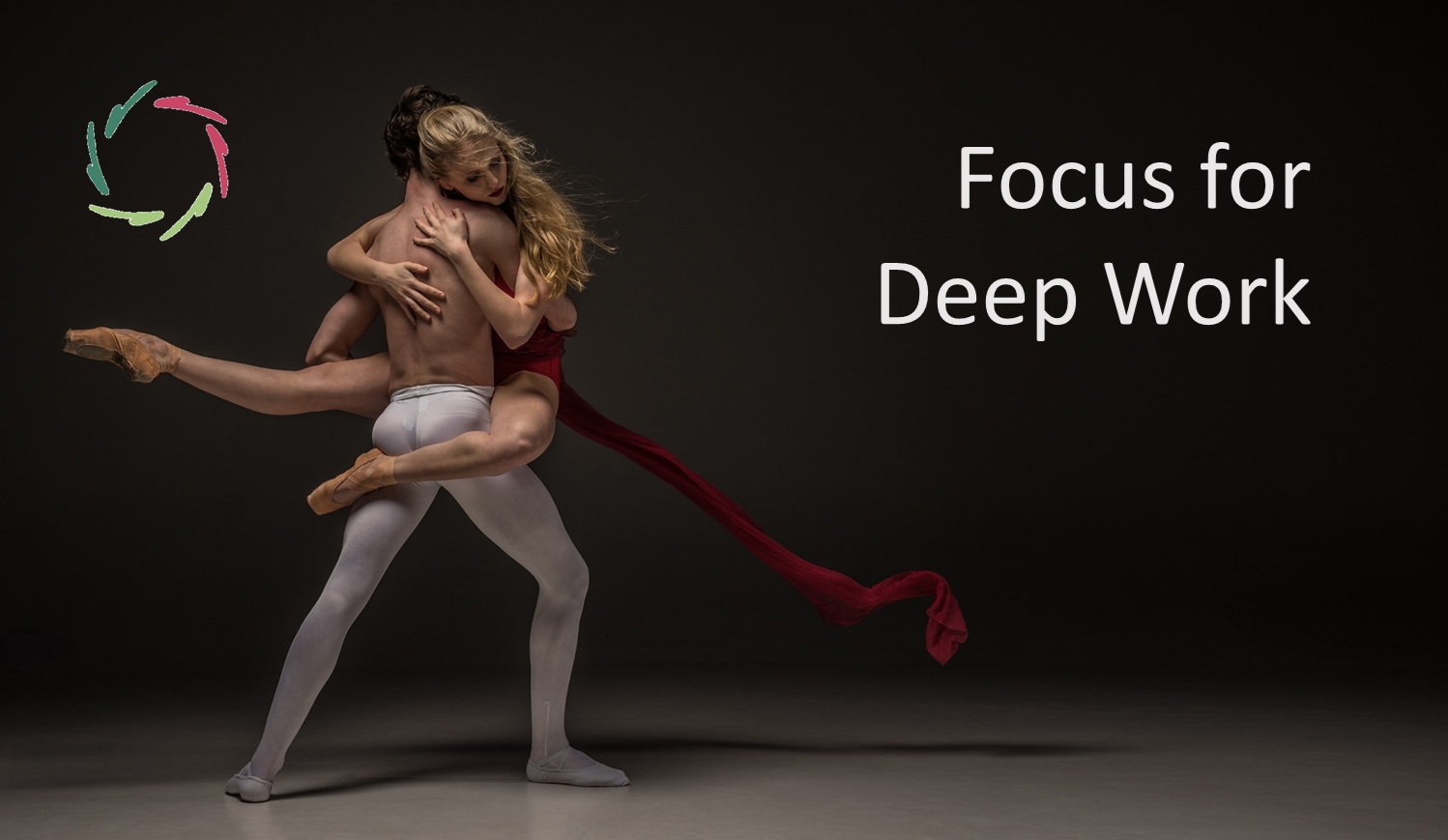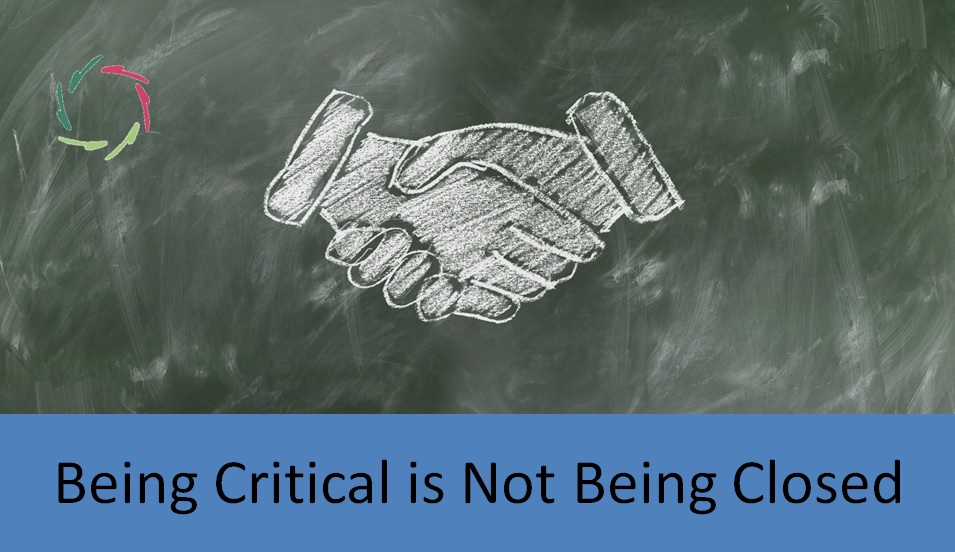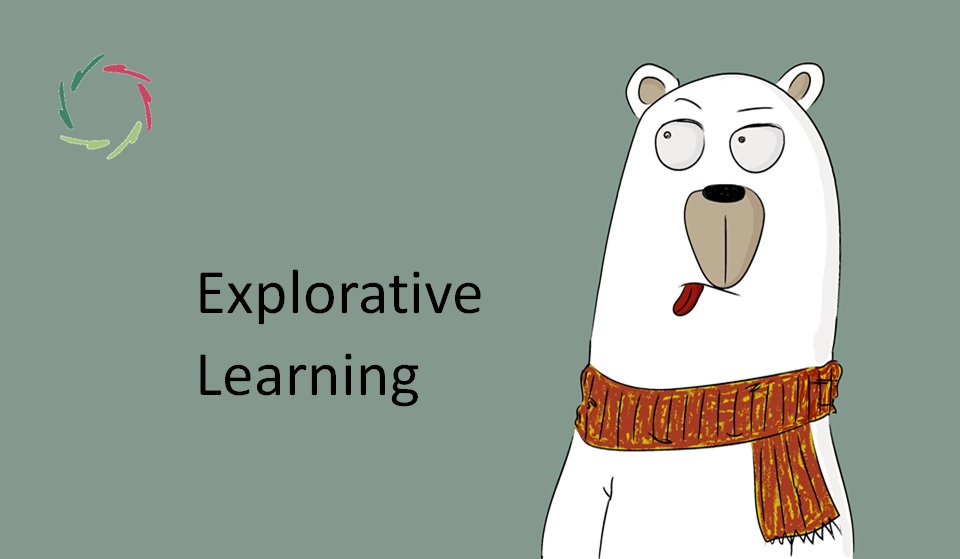Focus for Deep Work

This blog has two parts, starting with more ‘advanced’ techniques to focus attention and ready yourself for deep work. For the sake of completeness, the second part lists several more obvious strategies that one can readily find elsewhere. All taken together, thus also bringing the more advanced strategies to realization, Lisa v.2 will be able to coach users toward a better focus for deep work.
’Deep work’ is a state of focused, distraction-free concentration in which you engage your full cognitive capacity to perform demanding tasks. It allows you to create new value, develop advanced skills, and achieve results that are difficult to replicate. This level of concentration often leads to innovation, mastery, and meaningful outcomes, both personally and professionally.
More advanced ‘from the inside out’ techniques to attain focus for deep work
The rationale for this
Subconceptual layers and patterns are the hidden scaffolding of our thoughts, emotions, and behaviors, operating beneath conscious awareness. Unlike surface-level strategies that rely on willpower or rigid routines, engaging these deeper layers aligns the mind organically, making focus sustainable. Patterns within the subconceptual mind govern how we process information, connect ideas, and respond to stimuli. By working with these patterns – through autosuggestion, symbolic rituals, or meaningful reflection – we tap into the natural flow of the mind-brain system. This approach fosters a harmonious, self-reinforcing state of focus, one that feels less like effort and more like alignment. Engaging subconceptual layers allows focus to emerge as a natural extension of inner balance, leading to deeper, more innovative work.
Unlike more straightforward strategies, these ‘inside-out’ techniques are often difficult to implement independently. For most people, optimal results are achieved with Lisa’s personalized guidance. While the idea of working from the inside out may seem simpler, it actually demands a meditative mindset and a deep intention — qualities often unfamiliar in the context of daily life and modern cultural norms. Attempting to approach these techniques superficially only leads to superficial results, which is, of course, the antithesis of ‘deep work.’
- Use an autosuggestive mantra to align focus and subconscious intent
Leverage autosuggestion to prime your deeper mind for concentration. For instance, before starting a deep work session, repeat phrases like:
“I am fully present in this moment. My mind is calm and sharp. I move forward with clarity and purpose.”
This taps into subconceptual layers, allowing your focus to emerge from an inner alignment rather than sheer willpower.
- Ritualize your entry into deep work
Create a personalized, symbolic ritual to signal the transition into focus. This could be lighting a candle, playing a specific piece of music, or taking a few conscious breaths. From the AURELIS perspective, such rituals engage the deeper mind, priming it for meaningful work.
- Harness the power of depth and meaning
Reflect on the deeper purpose of your task. Ask yourself:
- “What intrinsic meaning does this work hold for me?”
- “How does this connect to my broader goals or inner growth?”
When your work resonates with your deeper self, focus becomes a natural extension rather than a chore.
- Turn focus into a subtle dance
Like the AURELIS metaphor of a dance between the conscious and non-conscious mind, approach focus as a collaborative flow. Instead of rigidly forcing yourself to concentrate, tune into the subtle interplay of your mental states. If distractions arise, treat them with curiosity, gently guiding your attention back to the task.
- Explore creative distractions for cognitive refueling
Counterintuitively, allow intentional, meaningful distractions. A short poem, a piece of art, or even 2 minutes of mindful doodling can stimulate the mind subconceptually. This refreshes your focus while keeping it attuned to depth.
- Develop a pattern of focused ‘micro-zones’
Divide your deep work into micro-zones: short bursts of intense focus (e.g., 15 minutes) followed by 1-2 minutes of inward reflection. This pattern reflects how the mind naturally works in bursts, preventing fatigue while maintaining depth.
- Engage in pre-focus visualization
Before diving into deep work, vividly imagine yourself engaged in the task. Visualize not just the process but also the satisfaction of completion. This engages the subconceptual mind, making the session feel both approachable and rewarding.
- Infuse work with playful depth
Transform your approach to deep work by introducing playful elements. Reframe challenges as puzzles or adventures. For example:
- Can you approach a task as an explorer seeking discovery?
- Can you find joy in the precision of crafting your work?
- Invite Compassion into your focus
Bring an attitude of Compassion toward yourself during deep work. If you falter, view it not as failure but as an opportunity to deepen your understanding of your mind. This self-Compassion mirrors the AURELIS principle of combining inner growth with kindness.
- Integrate nonlinear practices
Use nonlinear tools such as mind maps, freewriting, or creative brainstorming to engage both conscious and non-conscious layers. This taps into deeper cognitive patterns, creating a fertile ground for focus and innovation.
- Co-work with your inner guide
Imagine a part of yourself – a wise, calm inner guide – working alongside you. This subtle visualization encourages a sense of support and collaboration with your deeper mind, reducing resistance and enhancing flow.
- End with integration
The integration step at the end of a deep work session is not merely a time to pause but a powerful opportunity to connect your immediate efforts with your larger goals and inner growth. By reflecting on what you’ve accomplished, you acknowledge your progress and create a sense of fulfillment, reinforcing the value of your work. This act of mindful closure helps consolidate learning, allowing your subconscious mind to process and store patterns that can enhance future focus.
To deepen this process, ask reflective questions that link your session to your broader aspirations:
- How does today’s work contribute to my long-term vision?
- What strengths did I draw upon, which I can nurture further?
- What challenges did I face, and how can I address them creatively next time?
This reflective practice fosters a cycle of intentional improvement. Each session becomes a stepping stone, building momentum for future growth. Over time, this alignment strengthens your ability to focus, ensuring that deep work is not just productive but personally transformative. By integrating these reflections, you transform isolated efforts into a cohesive journey toward mastery and meaning.
***
Intentional strategies that address both external and internal factors
By consciously applying these techniques, you’ll create an environment and mindset conducive to deep, distraction-free concentration. Some of these may also be enhanced by Lisa’s support. Here’s how to create the ideal conditions for deep work:
External environment: create a distraction-free space
- Designate a work zone: Choose a place where interruptions are minimal, and associate it exclusively with focused work.
- Eliminate clutter: A tidy space reduces visual distractions and creates a calm environment.
- Turn off notifications: Silence your phone, email, and social media alerts.
- Set boundaries: Communicate with others about your need for uninterrupted time during specific periods.
Time management: schedule deep work blocks
- Use time-blocking: Allocate specific blocks of time in your schedule solely for deep work.
- Start small: Begin with shorter periods (e.g., 30 minutes) and gradually extend them as your focus strengthens.
- Protect your peak hours: Identify when your energy and focus are at their highest and dedicate that time to your most challenging tasks.
Internal mindset: prepare your mental state
- Set clear goals: Begin each session by identifying a specific task or outcome to work toward.
- Embrace boredom: Avoid the temptation to constantly seek stimulation. Learning to sit with boredom strengthens your focus muscles.
- Visualize success: Mentally rehearse what a productive deep work session looks and feels like.
Eliminate internal distractions
- Address mental clutter: Keep a notepad nearby to jot down intrusive thoughts so you can revisit them later.
- Avoid multitasking: Commit fully to one task at a time to maintain cognitive depth.
Build resilience: strengthen your focus over time
- Practice regularly: Focus improves with consistent effort. Treat deep work like a skill to be honed.
- Take breaks: Incorporate short, deliberate breaks between deep work sessions to avoid mental fatigue.
- Reflect and adapt: Evaluate what strategies work best for you and refine your approach.
Deep work is not just a skill.
It’s a transformative practice that can unlock your full potential. Whether you’re seeking to create something innovative, master a new skill, or experience the joy of proper focus, these techniques offer a path forward.
You might begin by experimenting with one or two strategies today: light a candle as a ritual, reflect on the deeper meaning of your work, or explore autosuggestion to align your inner self with your goals.
For those looking to go deeper, Lisa is here to guide you. Lisa’s personalized support can help you refine these practices, align them with your unique inner landscape, and sustain focus in a way that feels natural and rewarding. Why not take the next step toward a more focused, intentional life?
With Lisa’s help, deep work can become not just a practice but a way of being.


